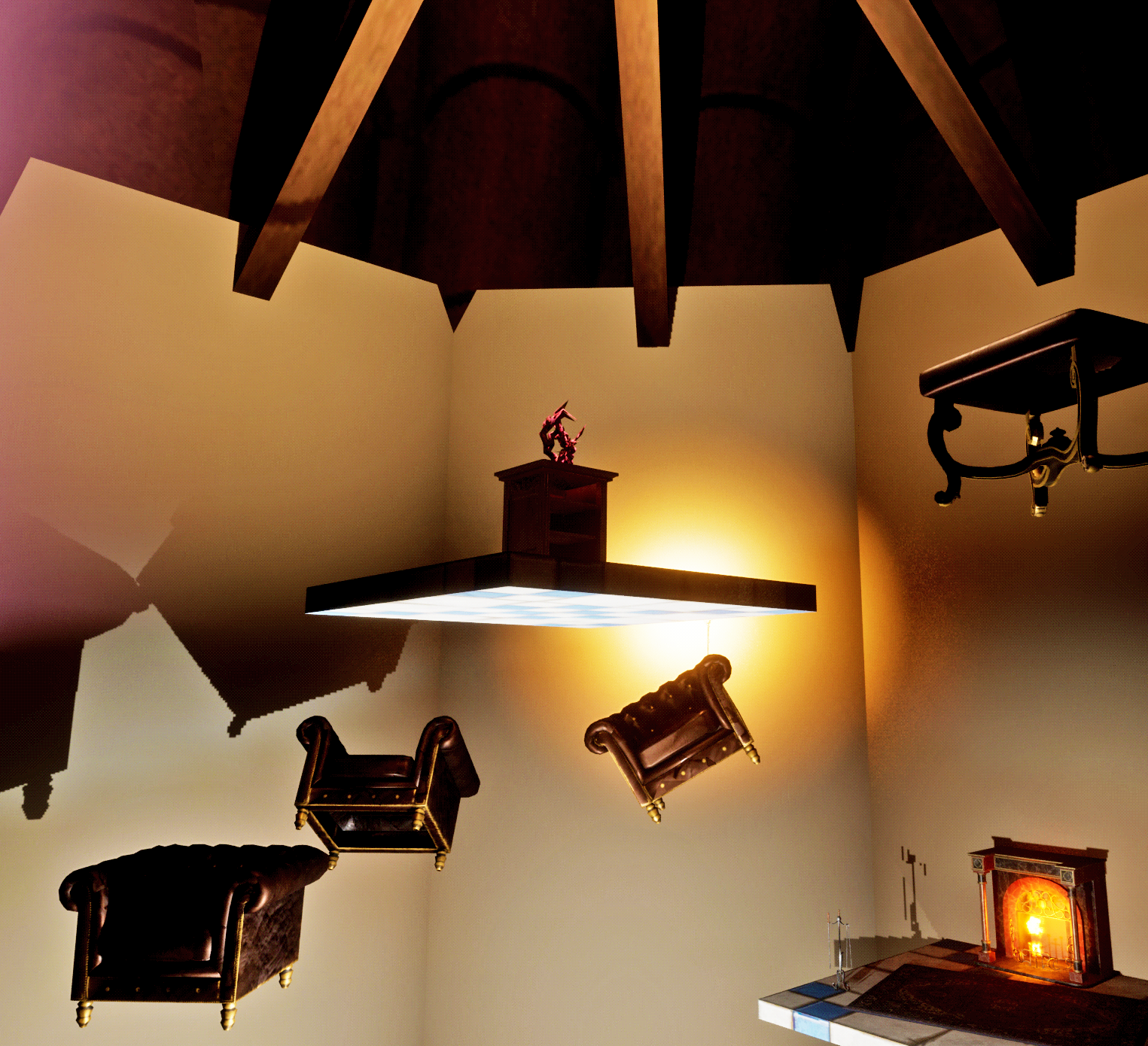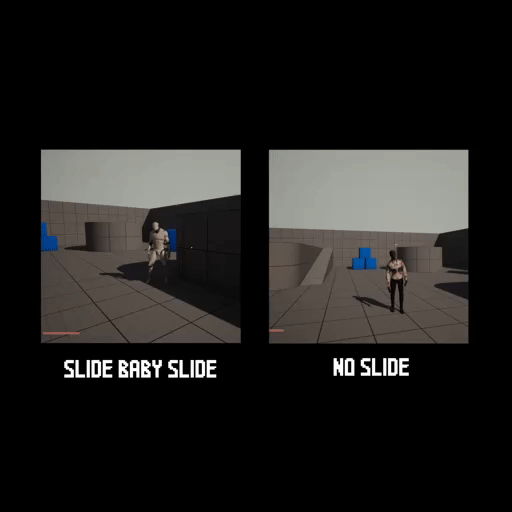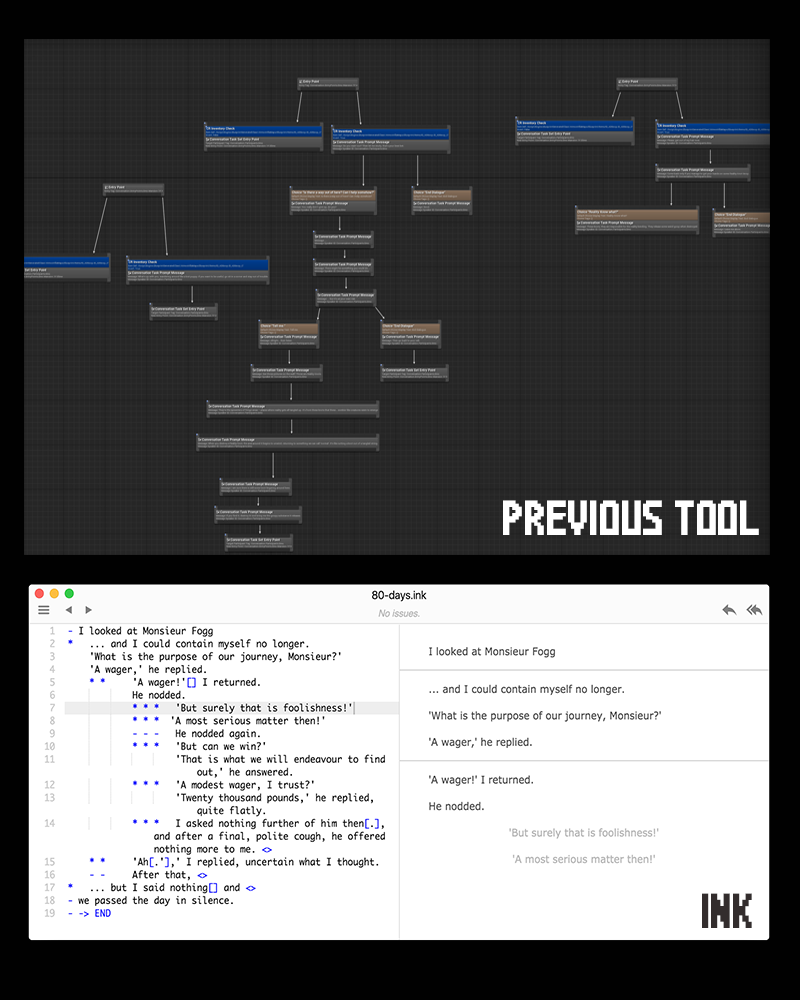TGVP’s Concept Demo Postmortem
This post refers to the TGVP-Concept release
Game Dev is a long journey, there are so many different pieces that make up a game and they all require different skills: art, programming, sound design, writing, level design… the list probably goes on. It’s a constant bouncing back and forth between big picture and detail work. Doing it right requires…doing it. Over and over. At least that is the poison I’m choosing and the reason behind all these prototypes I have been releasing every month since October.
The good news is: something’s moving in the right direction. The latest demo prototype I uploaded, codename “Concept”, is a decent improvement in some areas.
Steady Improvements
Communicating Goals
As stated, I want a game where goals are not really shoved down your throat but they become somewhat obvious by progressing.
In this demo you start locked inside a cellar: the obvious goal becomes to escape. Right after you are left free to explore the ground floor of the villa. You are told that you can’t escape and that something weird is distorting reality around you. Hopefully this should just prompt a player to explore, until you’ll hit a couple of gates which should naturally unlock the objective of finding the necessary key.
Ideally, I would like this structure to hold true for most of the game.

Guess what the goal is...
AD Rooms
I started off this journey with the idea of purely copying Resident Evil and making an obvious, well coded, clone. Although, I soon realized that a similar -quite successful- game already exists (see Nightmare of Decay) and I’d needed something else to stand out. I don’t want to change the whole premise for this but I want to add something unique. That’s where I started fiddling with the idea of Alternate Dimension Rooms (ADRooms, for friends); I'm talking about mixing the layout of a realistic venetian villa with some absurd, geometrically impossible levels.
I like this spin to the original concept because I think it could fit well with the core of the game and it opens up chances to vary the gameplay a little.

The idea of ADRooms opens up new scenarios
Less mess
I am fully aware that there are still various bugs in various systems but I can see that core mechanics are getting more stable with each iteration. Usually, in the rush of a deadline, I find myself adding extra code and systems here and there to adapt the existing mechanics to the need of the demo. This time was no exception but at a sensibly lower scale. I had a lot less spaghetti to clean up after this release and most things were possible right away with the tools I have built up to this point.
Lessons Learnt
Things are getting better but there's more work ahead. I can't say that the Concept demo is close to the quality level I am aspiring to. In no particular oder I identified the following improvement points.
Platforming pitfall
Creating ADRooms allowed me to go a little wild and experiment with ideas that have been bouncing around in my head for a while. One of this was to alternate standard puzzles to platforming sections. Yea, I think I have over-done it. The final section of the demo requires you to climb up this crazy tower made of stools and couches. But it is way too long and relies way too much on precision jumping. The stupid thing is that many times before I told myself: "FPS are not a good fit for a platformer", because it is really hard to judge exactly where you are going to land after a jump. Some titles might have been able to pull this off but it's a risky business and needs to be handled with care.
Yet I fell for it. And the result is... meh.

Time those jump carefully to get up there. Not really fun.
AI, oh AI
In the blog post that announced the Concept demo I mentioned how I reworked my AI code to improve it. Well, it still sucks.
I don't know if it's me or something else, but coding AI that does not suck is hard. And I am intentionally having zombies as enemies because I want an excuse to make them brain-dead. Their behaviors in the demo were simple but were still plagued by issues like:
- sometimes they would move while playing the idle animation, sliding happily on the ground. ugh, gross.
- the "new and improved" logic behind their behavior was still complex and hard to debug.
I'm ok with having stupid enemies but they should not break that easily. Since then I have started my 3rd overhaul of the AI logic. Will this be the good one? I genuinely have no clue :D Only one way to figure it out...

The right tools
In the last blog post before release I mentioned how I spent some time learning the Conversation system that manages my dialogues. As you can see in the pictures there, this was basically managed via a graph editor: each node in the graph corresponds to a message or an action; you author conversation by stitching together nodes, branching from them and adding decorators to define whether a path should be taken or not. It sounds good on paper but it was plagued by another fundamental problem: it was unintuitive and hard to work with.
(Also, it was quite buggy: sometimes conversations would not move on and Emo would get stuck saying the same sentence over and over...yay!)
When I write conversations for my characters I want to focus on the creative side of it, I want to unfold a story. Instead, with the system I was using, I was basically thinking of my conversations as software, adding nodes and branches and decorators.
So, I started looking around for alternatives and landed on something that seems promising: a system called Ink. Well, more than a system it is a programming language to develop stories that feels way more actual writing than coding.
As a bonus point, The Chinese Room (developers of various famous titles like Amnesia: A Machine for Pigs), recently released a handy plugin to integrate this tool directly in Unreal.
Now I can finally create dialogues in a natural to way, almost like I would if I were to write a book with various paragraphs and simply by using a text editor. At a glance the overall structure of the narrative is much more clear and intuitive to work with. I expect to be able to boost the narrative side of TGVP a lot in the near future, thanks to this tool.

Coming up
Concept has been a great first look into what the overall structure of TGVP will be like, in a very raw form. Now I want to spend some time planning the full game around these mechanics. I will take some time to put it down on paper, with all the chapters required to unfold the actual story of the Zanon family and the villa, and then create a block out of the whole thing in engine.
It will take some time and for that reason I will stop releasing new prototypes each month. I think I will still need to try out and iterate on certain level ideas or mechanics and -whenever that will be the case- I will still release some playable demos. But it won't be my goal to release them at a specific time.
I will be sure to announce every new release with a new post!
Until then, take good care!
Get The Great V Project
The Great V Project
In the Veneto countryside, uncover the haunting secrets hidden within a Palladian villa.
| Status | In development |
| Author | collederas |
| Genre | Adventure |
| Tags | 3D, Atmospheric, Horror, Retro, Singleplayer |
| Languages | English |
More posts
- TGVP-Concept - NEW DEMO IS OUTDec 24, 2023
- 24th of DecemberNov 30, 2023
- The Mansion PrototypeNov 09, 2023
- New Demo Out!Nov 06, 2023
- Next StepsOct 17, 2023
- NEW DEMO IS UPOct 09, 2023
- My NemesisOct 07, 2023
- START HERE - User's ManualSep 30, 2023
- The Crunchy Combat SystemSep 20, 2023
Leave a comment
Log in with itch.io to leave a comment.